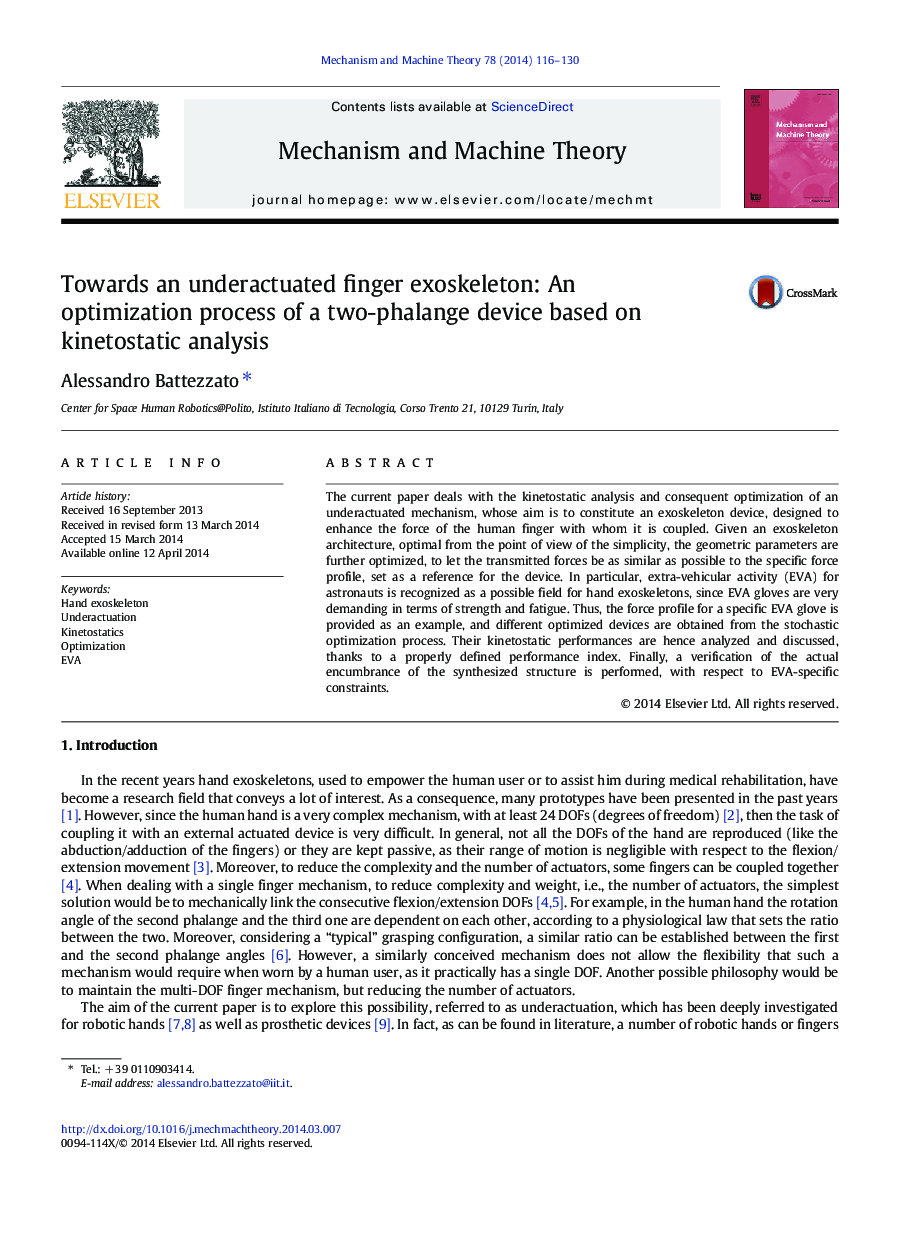| Article ID | Journal | Published Year | Pages | File Type |
|---|---|---|---|---|
| 799652 | Mechanism and Machine Theory | 2014 | 15 Pages |
•A 2-phalange underactuated finger exoskeleton was conceived.•A global performance index was defined through a kinetostatic analysis.•A procedure to optimize the system was determined, through a stochastic algorithm.•Several optimal solutions were found, suitable for EVA gloves.•The bulk of the optimal solutions were verified with respect to EVA-specific constraints.
The current paper deals with the kinetostatic analysis and consequent optimization of an underactuated mechanism, whose aim is to constitute an exoskeleton device, designed to enhance the force of the human finger with whom it is coupled. Given an exoskeleton architecture, optimal from the point of view of the simplicity, the geometric parameters are further optimized, to let the transmitted forces be as similar as possible to the specific force profile, set as a reference for the device. In particular, extra-vehicular activity (EVA) for astronauts is recognized as a possible field for hand exoskeletons, since EVA gloves are very demanding in terms of strength and fatigue. Thus, the force profile for a specific EVA glove is provided as an example, and different optimized devices are obtained from the stochastic optimization process. Their kinetostatic performances are hence analyzed and discussed, thanks to a properly defined performance index. Finally, a verification of the actual encumbrance of the synthesized structure is performed, with respect to EVA-specific constraints.
